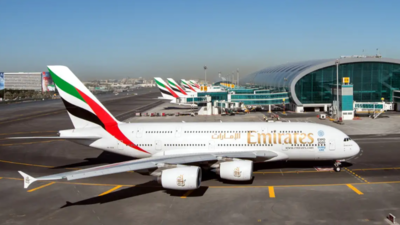
Emirates is shifting its strategic focus away from India due to long standing bilateral restrictions that have prevented the airline from expanding its operations in the country.Adnan Kazim, deputy president and chief commercial officer of Emirates, told ET that India, once among the airline’s top five global markets, has now slipped to the top 10. The main reason, he said, is the cap on seat entitlements under the current air services agreement between India and Dubai.As per the agreement, UAE carriers, including Emirates, are allowed a total of 65,000 weekly seats to India, with a reciprocal limit for Indian carriers flying to Dubai.
These limits have remained unchanged for over a decade despite a sharp increase in outbound travel from India."All 171 weekly frequencies we operate to India are flying above 95% seat factor," said Kazim as per ET. "We're spilling traffic. The demand far exceeds the supply."Due to the inability to expand in India, Emirates is redirecting its growth to other regions. "We've been growing consistently, year after year, by at least 3-5%," Kazim said.
"But we've not been able to add a single seat to India since 2014-nearly 11 years.”Emirates has since increased capacity and added destinations in Asia, the Americas, Europe, Africa, and the Middle East. "That could've been India playing that role... but it's not the case," Kazim noted.He said Emirates remains open to partnerships with Indian carriers, but such tie-ups offer limited value unless seat entitlements are increased."Flights
are already full. A partner cannot add much in that situation." he explained.Kazim also expressed interest in expanding into Tier 2 Indian cities. However, those plans are on hold due to the same restrictions.Pointing to the potential of the Indian market, Kazim highlighted the relatively low international travel volumes. “You're moving about 120 million international passengers with a population of 1.5 billion. That number should be much higher." he said.

 4 hours ago
1
4 hours ago
1







 English (US) ·
English (US) ·